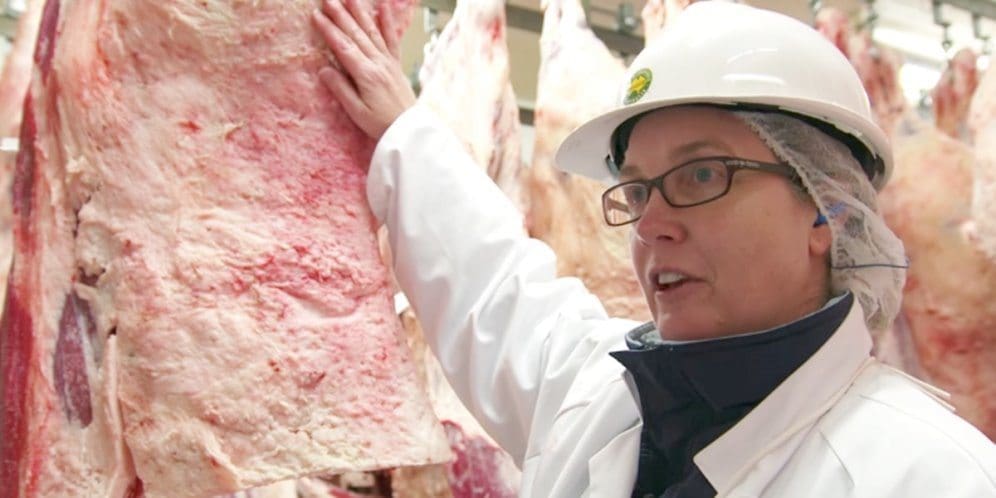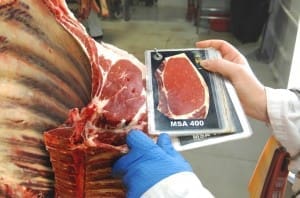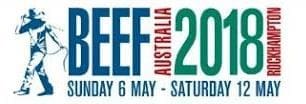
Janine Lau
WELL over 1000 carcases have been graded in every state of Australia in the lead-up to the Beef Australia 2018 national carcase competition, which will be finalised next month.
By the time the judging component of the competition closed on March 13, experienced MSA grader Janine Lau had assessed 1092 nominated carcases (effectively, 364 pens of three) in 24 beef processing plants in Queensland, NSW, Victoria, Tasmania, South Australia and Western Australia.
Carcase competition committee chair, David Hill said this year’s entry had doubled the 530 carcases entered in the last 2015 event, making it a truly national competition.
“Several of this year’s classes will have 70-odd pens of three in them,” Mr Hill said. “It means anybody whose cattle get onto the front page (a term used in large carcase competitions, where feedback result sheets rank entries by score) can be well satisfied.”
One of the innovations applied to the competition this year has been the replacement of conventional yield assessment (a simple equation based on eye muscle area, fat cover and carcase weight), with the more advanced Gardiner algorithm used by both Teys and JBS in their carcase yield calculations.
“Who knows – in three years’ time at Beef 2021, we may for the first time be using DEXA scanning to provide the yield performance indication,” Mr Hill said.
A vast spectrum of breed types was evident in this year’s entries, covering Bos Indicus, British and Euro breeds and numerous two and three-way crosses.
Competition organisers were committed to using a single grader to assess all entries across Australia – a policy which while delivering an unrivalled degree of fairness, came at considerable cost to MLA, with around 100 working days logged in the assessment process.
Tasked with the project has been Janine Lau, an MSA senior grader who works as Meat Standards Australia’s research, development and integrity manager. She first judged the competition in 2015.
Janine started analysing carcases for the competition in Mackay, Central Queensland in June last year, and finished the task three weeks ago. The extended nine-month judging window was designed to cater for seasonal cycles across all parts of Australia. Along the way she visited chillers in 24 beef processing plants from Perth to Townsville – some multiple times to fit with periods of optimum grass and grainfed turn-off.
 Entries are competing in seven classes this year:
Entries are competing in seven classes this year:
- Three pasturefed classes for trade steers and heifers (180-260kg and 260-340kg) and export weight steers (300-420kg)
- Three grainfed classes for trade steers and heifers (180-260kg and 260-340kg) and export weight steers (300-420kg)for the same weight divisions as above
- A new ‘open’ class designed for entries receiving grain assistance in the paddock, which do not qualify for the grassfed or grainfed classes, for heavy trade steers or heifers 260-340kg.
Judging emphasis has been modified for the 2018 event, with 40 percent of points awarded for MSA index, 40 for lean meat yield, and 20 for meeting market specs.
“The competition is a great opportunity for each individual exhibitor to benchmark their herd against the best in the country on eating quality and yield,” Mr Hill said.
Exhibitors will be provided with comprehensive performance data, and winners will be announced a gala awards dinner at Beef Australia 2018 on Tuesday evening, 8 May. Click here to access tickets.




And what about the flavour. This is a food not a swatch of cloth for colour comparison or a load of bricks for weight measuring and if it doesn’t taste good then it is not worth the effort. MLA needs to assess beef as a food and not a yield based commodity that comes in shades of red with some white flecking. Until producers change their identification from livestock producers to food producers this is all a waste of time and money.